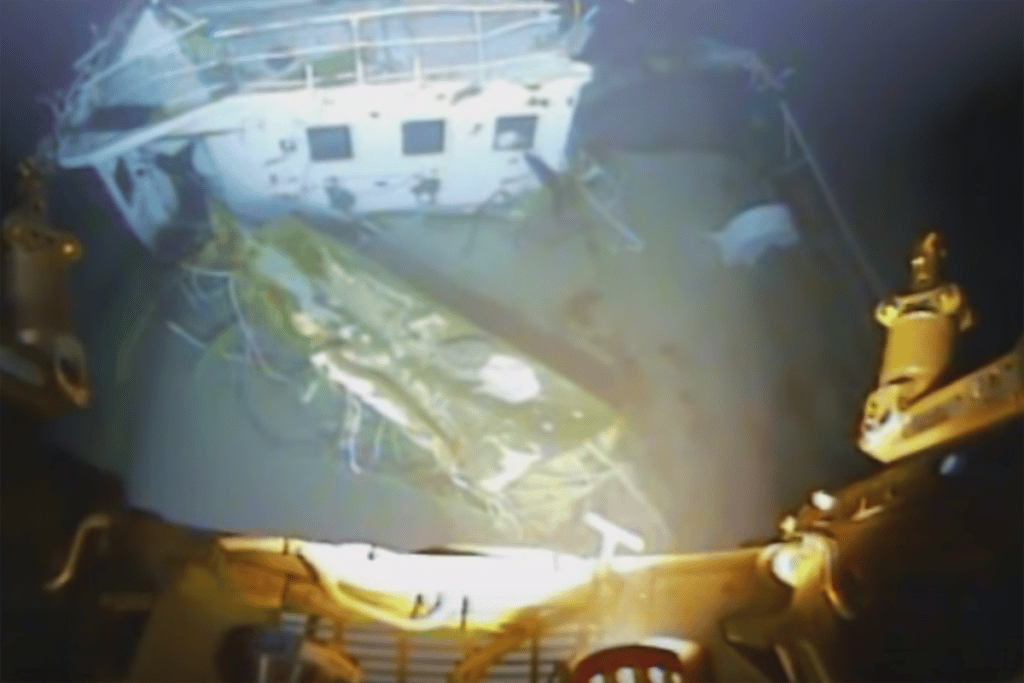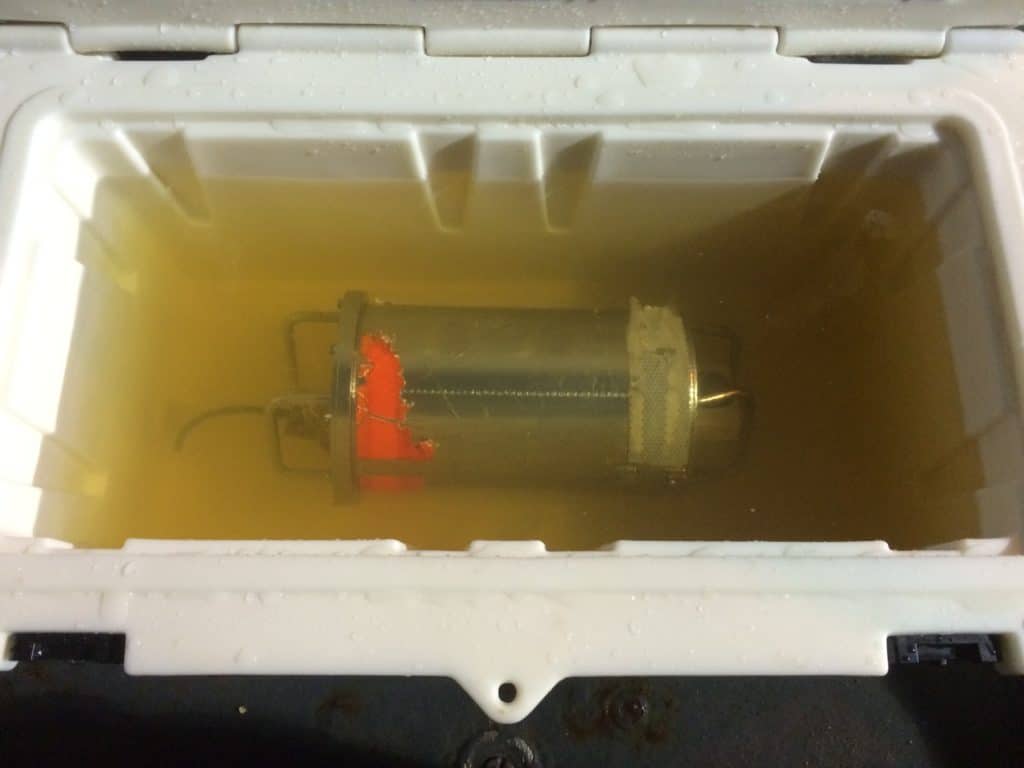
For months, yachtsmen wondered what happened to the El Faro, the 791-foot cargo ship that was lost when Category 3 Hurricane Joaquin produced ocean swells up to 40 feet and winds in excess of 92 mph between Florida and Puerto Rico. The ship vanished in September 2015 with 33 mariners aboard—the greatest loss of a U.S. ship in 35 years’ time. An initial search of some 183,000 square nautical miles revealed no hint of their final resting place.
Now, the El Faro’s watery grave has been revealed. The National Transportation Safety Board has just released photos and video, which remote-controlled underwater vehicles captured.
Investigators found the wreckage some 15,000 feet below the ocean’s surface by using a side-scan sonar. It’s a machine that weighs 3,600 pounds, and that is the size of a work desk. It maps the ocean floor, and it sent back an image of a right angle, which the sonar operator knew did not occur in nature. Further scans revealed the shape of a ship the El Faro’s size, resting right-side up on the ocean floor.
The team sent cameras below to confirm the ship’s identity, and the images shown here are the result. At the time of her sinking, the El Faro was carrying 400 cargo containers. Only two are still on her deck.
The search continues: Investigators are still looking for the “black box” and any clues it might hold.
“60 Minutes” aired a complete report: Watch it here.
In a particularly chilling discovery, her bridge deck and lower navigation bridge deck appear to have been completely sheared off with the crew still inside, a result, investigators posit, of the strong winds and seas.
UPDATE: After a 10-month exhaustive effort, the voyage data recorder — or the “black box” — was found on August 7, the National Transportation Safety Board reported.









